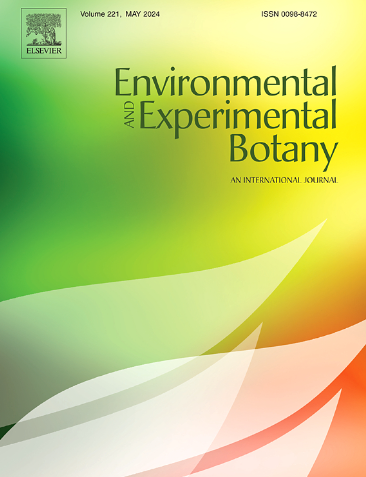含有WD-40重复序列的蛋白CmRACK1负向调控菊花开花,响应光周期和赤霉素信号
IF 4.7
2区 生物学
Q2 ENVIRONMENTAL SCIENCES
引用次数: 0
摘要
菊花是典型的短日照植物,光周期和赤霉素(GA)信号的感知和转导是调节菊花开花的关键因素。活化C激酶1 (activated C kinase 1, RACK1)蛋白受体调控菊花开花的功能和分子机制目前尚不清楚。我们从菊花中分离到了CmRACK1。我们发现CmRACK1受光周期诱导,表现出节律性表达特征。与野生型相比,CmRACK1过表达系开花时间延迟,而人工微RNA (amiRNA)介导的敲低系开花时间提前。对CmRACK1转基因系和野生型系的转录组分析显示,赤霉素不敏感矮子1B (GID1B)、赤霉素20氧化酶1和赤霉素3氧化酶1的表达存在差异。对转基因和野生型植株的赤霉素含量进行定量分析,结果表明CmRACK1过表达系的GA1含量显著降低,低表达系的GA1含量显著升高。我们在烟叶中进行了双荧光素酶报告基因实验,发现CmRACK1刺激CmGID1B的表达,从而通过赤霉素信号通路负向调节菊花开花。研究结果为了解菊花开花时间调控的分子机制提供了基础。本文章由计算机程序翻译,如有差异,请以英文原文为准。
The WD-40 repeat-containing protein CmRACK1 negatively regulates chrysanthemum flowering in response to photoperiod and gibberellin signaling
Chrysanthemums are typical short-day plants, and photoperiod and gibberellic acid (GA) signal perception and transduction are the key factors regulating flowering in the chrysanthemum. The function and molecular mechanism undertaken by the receptors for activated C kinase 1 (RACK1) protein to regulate chrysanthemum flowering are currently unclear. Here, we isolated CmRACK1 from chrysanthemum. We found that CmRACK1 was induced by the photoperiod and exhibited rhythmic expression characteristics. Compared with the wild-type, the CmRACK1 overexpression lines showed delayed flowering, while the artificial micro RNA (amiRNA)-mediated knockdown lines showed early flowering. Transcriptome analysis of CmRACK1 transgenic and wild-type lines revealed differential expression of GIBBERELLIC ACID INSENSITIVE DWARF 1B (GID1B), gibberellin 20-oxidase 1, and gibberellin 3-oxidase 1. Quantification of gibberellin levels in transgenic and wild-type plants indicated a significant decrease in GA1 content in the CmRACK1 overexpression lines and a notable increase in the knockdown lines. We conducted dual-luciferase reporter assays in Nicotiana benthamiana leaves and found that CmRACK1 stimulates the expression of CmGID1B, thereby negatively regulating chrysanthemum flowering via the gibberellin signaling pathway. Our research findings provided a foundation for understanding the molecular mechanisms underlying flowering time regulation in chrysanthemum.
求助全文
通过发布文献求助,成功后即可免费获取论文全文。
去求助
来源期刊

Environmental and Experimental Botany
环境科学-环境科学
CiteScore
9.30
自引率
5.30%
发文量
342
审稿时长
26 days
期刊介绍:
Environmental and Experimental Botany (EEB) publishes research papers on the physical, chemical, biological, molecular mechanisms and processes involved in the responses of plants to their environment.
In addition to research papers, the journal includes review articles. Submission is in agreement with the Editors-in-Chief.
The Journal also publishes special issues which are built by invited guest editors and are related to the main themes of EEB.
The areas covered by the Journal include:
(1) Responses of plants to heavy metals and pollutants
(2) Plant/water interactions (salinity, drought, flooding)
(3) Responses of plants to radiations ranging from UV-B to infrared
(4) Plant/atmosphere relations (ozone, CO2 , temperature)
(5) Global change impacts on plant ecophysiology
(6) Biotic interactions involving environmental factors.
 求助内容:
求助内容: 应助结果提醒方式:
应助结果提醒方式:


